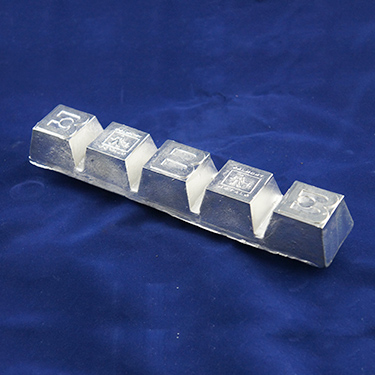Bismuth, which is non-toxic and compliant with environmental regulations, is an important additive to copper and tin alloys. However, recent Chinese export controls have spiked prices and restricted bismuth supplies, forcing manufacturers to reevaluate sources and alloy formations. This article will explore the role of bismuth and identify potential substitutes.
Bismuth’s Role in Copper and Tin Alloys: Functional and Regulatory Significance
Bismuth is a popular alternative to lead in copper and tin alloys, particularly those used for solder and free-machining brass. Like lead, bismuth is dense, malleable and ideal for machining. It increases the wettability of solder alloys to create stronger and more reliable joints. Because bismuth has a low melting point, it’s often alloyed with tin to improve melt consistency.
Perhaps the most important advantage of bismuth is its low toxicity. As governments impose lead restrictions, bismuth alloys streamline compliance with EPA laws and regulations such as RoHS and REACH. Industries including plumbing, coatings, castings, and electronics rely on bismuth as a safe lead replacement.
The Impact of Chinese Export Controls on Bismuth Availability and Cost
China dominates the global bismuth market, producing 80% of the world’s supply. Given the widespread dependence on Chinese exports and bismuth’s limited natural availability, China’s policies have an outsized market impact.
In early 2025, China tightened its export controls on critical minerals, including bismuth. New licensing requirements drastically reduced exports and triggered a 600% increase in bismuth prices.
These new constraints have exposed significant sourcing vulnerabilities. As global trade tensions persist, manufacturers are increasingly seeking alternate suppliers in countries including Laos, South Korea, and Japan. Small and midsize alloy producers have been disproportionately impacted. With limited resources, leverage, and supply chain flexibility, they often struggle to pursue new sourcing strategies.
Viable Substitutes for Bismuth in Copper and Tin Alloy Applications
In addition to diversifying bismuth sources, manufacturers are searching for viable alternatives. The most promising replacements include:
- Selenium and tellurium. Primarily recovered as byproducts of copper refining or processing, selenium and tellurium are partial replacements for bismuth in copper alloys. They improve discontinuous chip formation when added to brass, reducing tool wear and increasing machinability. Both elements can be toxic in certain forms and concentrations.
- Indium. Like bismuth, indium is a non-toxic metal that can be used to increase wettability and lower the melting point of tin solder alloys. Although indium is typically more expensive, even small amounts can have a measurable impact on corrosion resistance and tensile strength.
- Sulfur. When added to free machining steel and copper alloys, sulfur reacts with other substances to form small particles. These inclusions act as chip breakers that improve machinability. Sulfur is abundant and less expensive than bismuth. However, alloys made with sulfur are difficult to weld; they also have a less desirable surface finish than bismuth alloys.
Balancing Performance and Availability in Alloy Selection
While alternatives to bismuth exist, none of the options are perfect. As companies consider replacements, it’s critical to evaluate the metallurgical properties, market conditions, and regulatory landscape. With increased flexibility in alloy design and close collaboration with suppliers, manufacturers can better position themselves to navigate ongoing volatility in price and supply.
Belmont Metals offers high-quality bismuth alternatives. Contact us to discuss your project needs.

